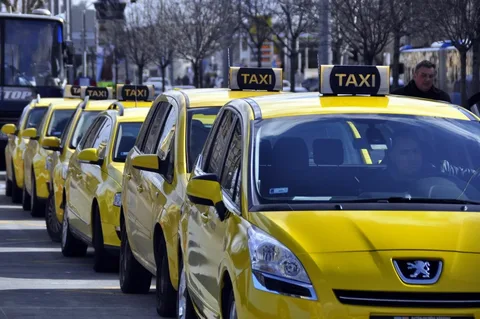Understanding taxi fares in the UK can feel like deciphering a complex puzzle, particularly when you’re stood on a street corner watching the meter tick upwards. Whether you’re a tourist visiting Britain or a local resident who rarely uses taxis, knowing how these charges are worked out can help you budget better and avoid any nasty surprises when the journey ends.
The Foundation of UK Taxi Pricing
Taxi fares across the UK are primarily calculated using a combination of time and distance, though the exact methodology varies significantly between different regions and licensing authorities. Most licensed taxis operate on a regulated tariff system, which means the rates are set by local councils rather than individual drivers or companies.
The basic structure typically includes an initial hiring charge (often called a “flag fall”), followed by incremental charges based on either distance travelled or time elapsed, whichever accumulates the higher fare. This dual-charging system ensures that passengers are charged fairly whether they’re stuck in heavy traffic or cruising along clear motorways.
Regional Variations Across Britain
One of the most striking aspects of UK taxi pricing is how dramatically fares can differ between locations. London’s iconic black cabs operate under Transport for London’s regulated tariff, which is reviewed annually and tends to be among the highest in the country. Meanwhile, taxi fares in smaller towns and rural areas are generally set by local licensing authorities and can be considerably more affordable.
In major cities like Manchester, Birmingham, and Leeds, fares are typically positioned somewhere between London’s premium rates and those found in smaller communities. These regional differences reflect varying operating costs, including fuel prices, insurance premiums, and licensing fees that drivers must absorb.
Time-Based Charging Explained
When your taxi is moving slowly or stationary, charges are calculated based on time rather than distance. This time-based component protects drivers from losing income during traffic jams or when passengers make multiple stops. The waiting time charge usually kicks in when the vehicle’s speed drops below a certain threshold, typically around 10-12 mph.
Most areas operate different tariff rates depending on the time of day and week. Standard rates usually apply during weekday daytime hours, with higher charges introduced for evenings, weekends, and public holidays. These premium periods reflect the increased demand for taxi services and compensate drivers for working unsociable hours.
Distance-Based Calculations
When travelling at normal speeds, fares are calculated primarily on distance covered. The charging increment is typically measured in small units – often every tenth of a mile or every few hundred yards – ensuring that even short journeys are charged proportionately.
For longer journeys, such as Airport Taxi Transfers, some areas implement different charging bands. These might include reduced per-mile rates for distances beyond certain thresholds, making extended trips more economical for passengers whilst still providing fair compensation for drivers.
Additional Charges and Surcharges
Beyond the basic time and distance calculations, several additional charges might be applied to your final fare. Extra passenger charges are common when more than a certain number of people travel together, typically when exceeding four passengers. Luggage charges may also apply, particularly for large items or multiple pieces of baggage.
Some areas implement surcharges for journeys starting or ending at specific locations, such as airports or train stations. These supplements recognise the additional costs and inconvenience that drivers face when operating in these busy transport hubs.
Modern Technology and Fare Transparency
Traditional mechanical taxi meters are increasingly being replaced by digital systems that provide greater accuracy and transparency. These modern systems can display running totals in real-time, helping passengers track their journey costs as they accumulate.
Many contemporary systems also accommodate different payment methods, including contactless cards and mobile payments, making the transaction process smoother for both drivers and passengers. Some areas have introduced apps that allow passengers to estimate fares before booking, providing greater pricing transparency.
Booking Fees and Premium Services
Pre-booked taxis often carry additional booking fees, which are separate from the metered fare calculated during the journey. These administrative charges cover the cost of dispatch services and advance reservation systems that taxi companies operate.
For specialist services, such as Taxi from Stalybridge to Manchester or other cross-boundary journeys, pricing might be calculated differently. Some operators offer fixed-rate pricing for popular routes, providing passengers with cost certainty before travelling.
Understanding Your Rights
As a passenger, you have the right to see the taxi meter and understand how your fare has been calculated. Licensed drivers should be able to explain the tariff structure and any additional charges that have been applied to your journey.
If you’re planning specific trips, such as Chorlton to Manchester Airport, it’s worth asking about fixed-price options, which some operators provide for common routes. These pre-agreed fares can offer better value than metered charges, particularly during peak travel times.
Making Informed Decisions
Understanding how taxi fares work empowers you to make better decisions about your transport options. While taxi travel might be more expensive than public transport, the convenience, comfort, and door-to-door service often justify the additional cost, particularly for time-sensitive journeys or when travelling with luggage.
Before starting any journey, don’t hesitate to ask your driver about the expected fare or whether alternative charging options might be available. Most professional drivers appreciate passengers who take interest in understanding the fare structure, and transparency benefits everyone involved in the transaction.



